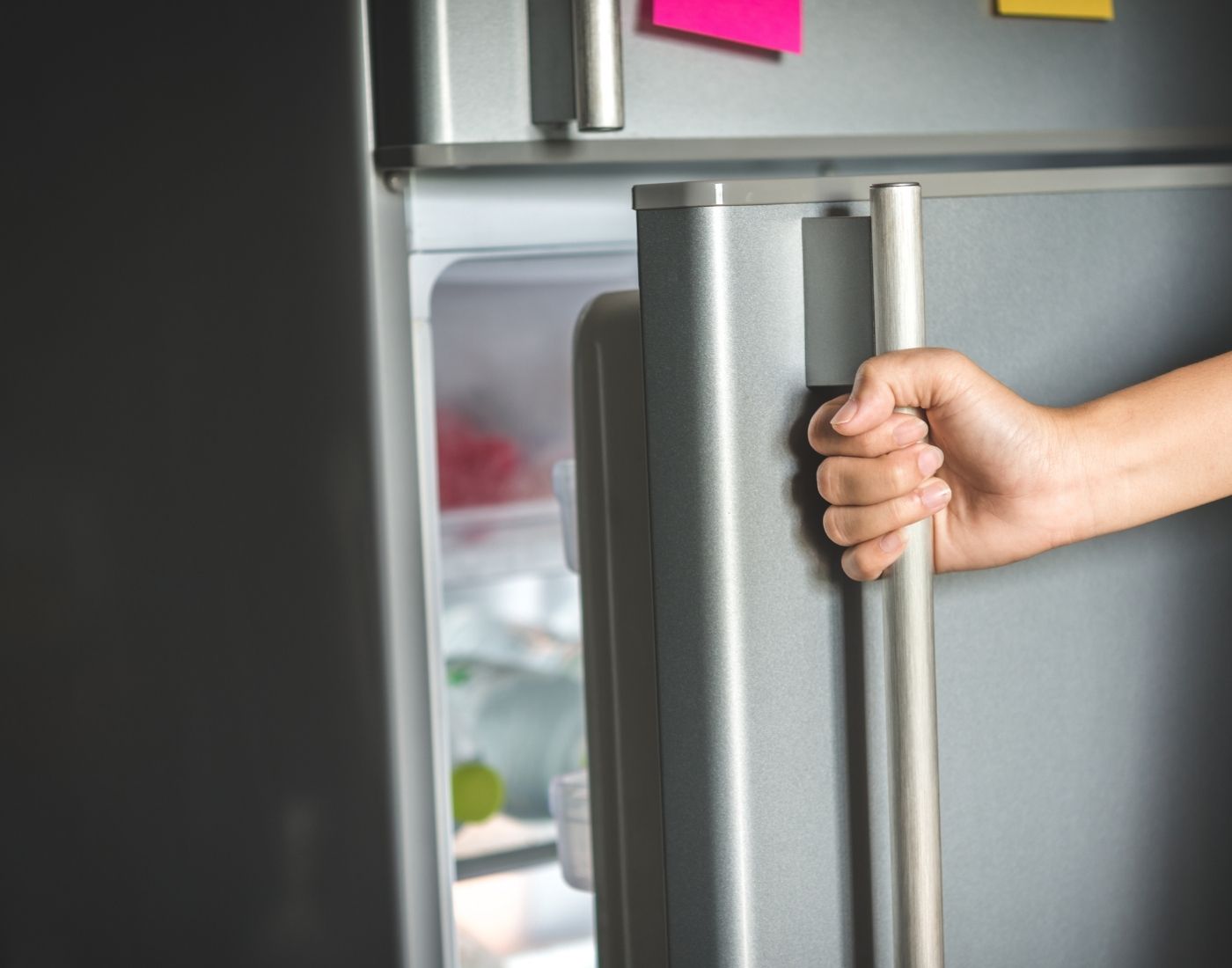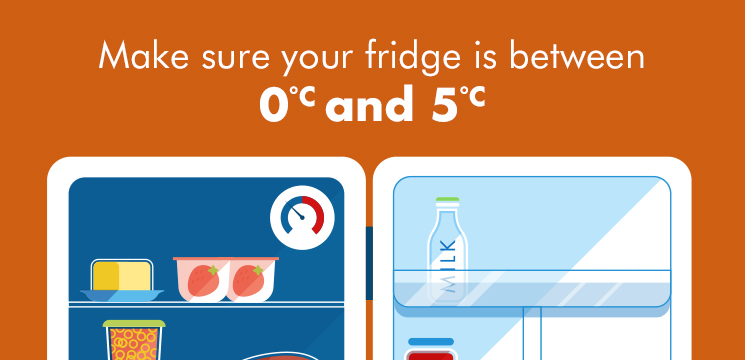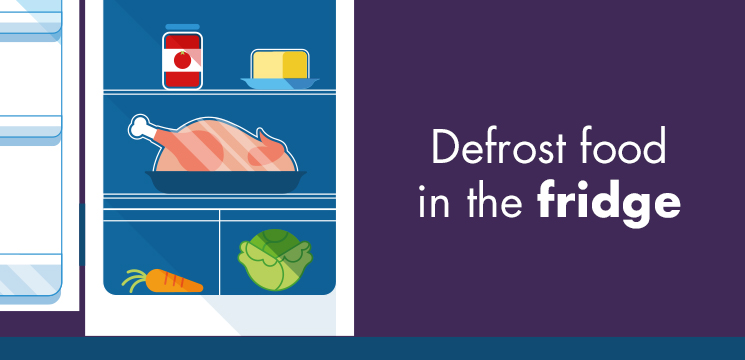Chilling, freezing and defrosting food safely helps to stop or slow down the growth of harmful bacteria.
Your fridge is a weapon in the battle against germs, but it must be used effectively. Some foods need to be kept in the fridge to help stop or slow down bacterial growth and keep them fresh and safe for longer. Generally, the colder the temperature, the slower bacteria will grow. But cold temperatures don't always stop bacteria growing altogether.
Here are a few useful things to remember about storing food safely in the fridge:
- look out for ‘keep refrigerated’ on the food label
- keep your fridge between 0°C and 5°C – and regularly check the temperature with a thermometer. You can use the built-in dial/gauge inside the fridge to change the power setting (typically the higher the value the more power the fridge uses to take the temperature down; if in doubt, check the manufacturer’s instructions for your fridge). Note: this built-in dial/gauge does not represent the temperature in °C
- wait for food to cool down before you put it in the fridge. Do not let it sit at room temperature for longer than 1-2 hours
- try not to overfill your fridge as this allows air to circulate and maintain the set temperature
- do not leave the fridge door open for long periods of time
- eat leftovers within 2 days
- put food back in the fridge as quickly as possible
- when you're eating outside at a barbecue or picnic, use a cool bag or cool box
- if you're putting out food for a party, don't leave it out for more than 4 hours



